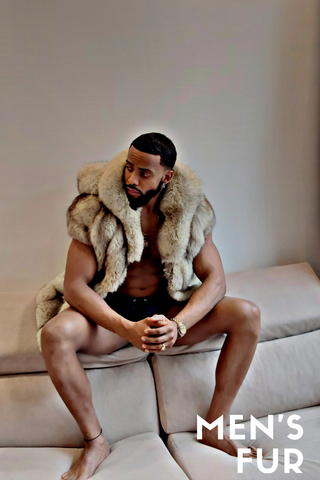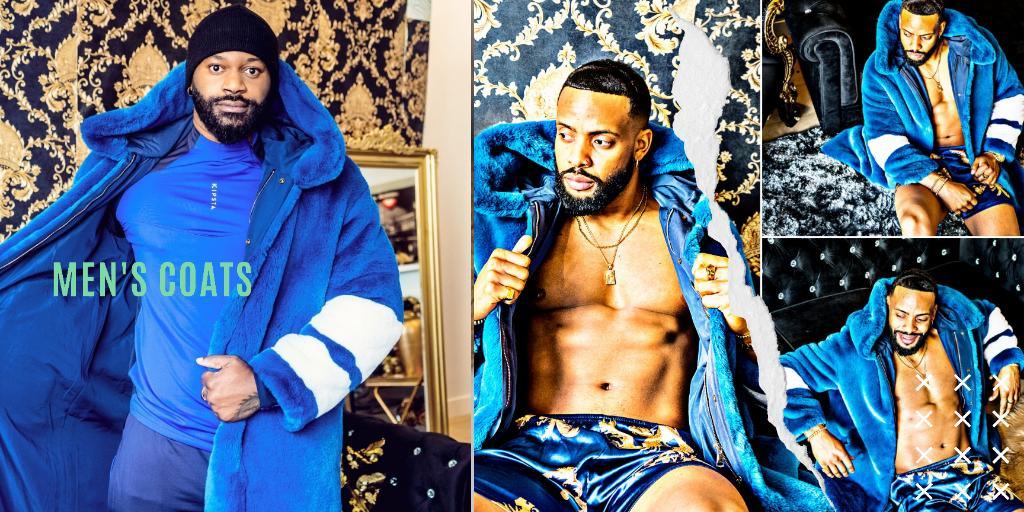Its origin is not entirely clear and is the subject of several stories. The only thing we know for sure is that it came from the British Navy.

If the pea coat was indeed used by the British Navy, some say it was designed specifically for sailors who wanted to climb the masts, the "refeerers"! Hence the creation of a double-breasted coat (practical because it allows to button on the most adequate side according to the wind), curved and short to facilitate the climbing.

According to Camplin, supplier of the British navy in 1850, the pea coat would have been created for the Indian native officers. They were then called "petty officer" and the brand designed a "petty coat", which later became "peacoat" (the Camplin brand still exists, with the little rope around the neck as a signature).
The magazine Tailor and Cutter (a reference on trends and etiquette, especially on the news of the Crown in the eighteenth century) speaks of it for the first time, in October 1868. They mention a double-breasted jacket with a Prince of Wales pattern.

We distinguish two types of coats:
A rather technical one intended for use in delicate climatic conditions (made in a navy blue fabric lined with wool)
another model, more dressed up, which is intended for an urban use with silk lapels and a velvet collar.
Today it is the technical model, more relaxed that we remember and which has crossed the times and styles. The pea coat is one of the most casual winter coats you can find. It is a good solution to give yourself a little body, thanks to the cross-buttoning that brings volume to the torso. The material is usually melton wool (80% wool and 20% polyamide): it is the typical wool of sailors' coats. It is also an ideal coat when you are small, because it does not go down too low and leaves you a more generous visible leg length than other coats.

The duffle coat: The most versatile winter coat
Belgian heritage is the most common myth about the duffle coat, which is said to come from the town of Duffel, in the province of Antwerp. The duffel material was a black, rough wool
which would have given its name to the coat. Except that, unluckily, it was never produced in this city, nor in this material!
It is in England (like most of the pieces found today in the men's wardrobe) that the very first Duffle coat appeared. Its origin dates back to 1887, when John Partridge, a British outerwear retailer, sold it on special offer.
If the look was then very different from what we know today, we find the characteristic brandebourgs. The coat was on the other hand shorter, with a very straight cut and a slightly asymmetric closure.
If John Partridge is at the initiative of the creation of the duffle-coat, he was well inspired by the Polish frock (a hooded coat with a similar closure system, horizontal, which is particularly origianl on the coats of the last 200 years).

The duffle coat was in its navy version, particularly invasive and loose. However, this wide cut allowed the sailors an appreciated freedom of movement, especially when climbing the masts.
The problem with such a cut is that it was not warm (air and rain easily infiltrating these large open spaces between the sleeves, hoods ...). Such a hassle, that some sailors went as far as tying a rope around them to tighten the coat!
Thanks to the feedback from the sailors, the cut was revised, narrower, with double layers on the shoulders and ties on the hood to make it fit better.
It was originally shorter, and was lengthened to the knees during the Second World War.
A winter coat that finds its place today in a casual style. It is appreciated for its comfort and its looser fit than the caban. It is a coat that offers a beautiful look when you are tall and thin (it allows you to flesh out a little) but also when you are more imposing (it evens out the silhouette).

